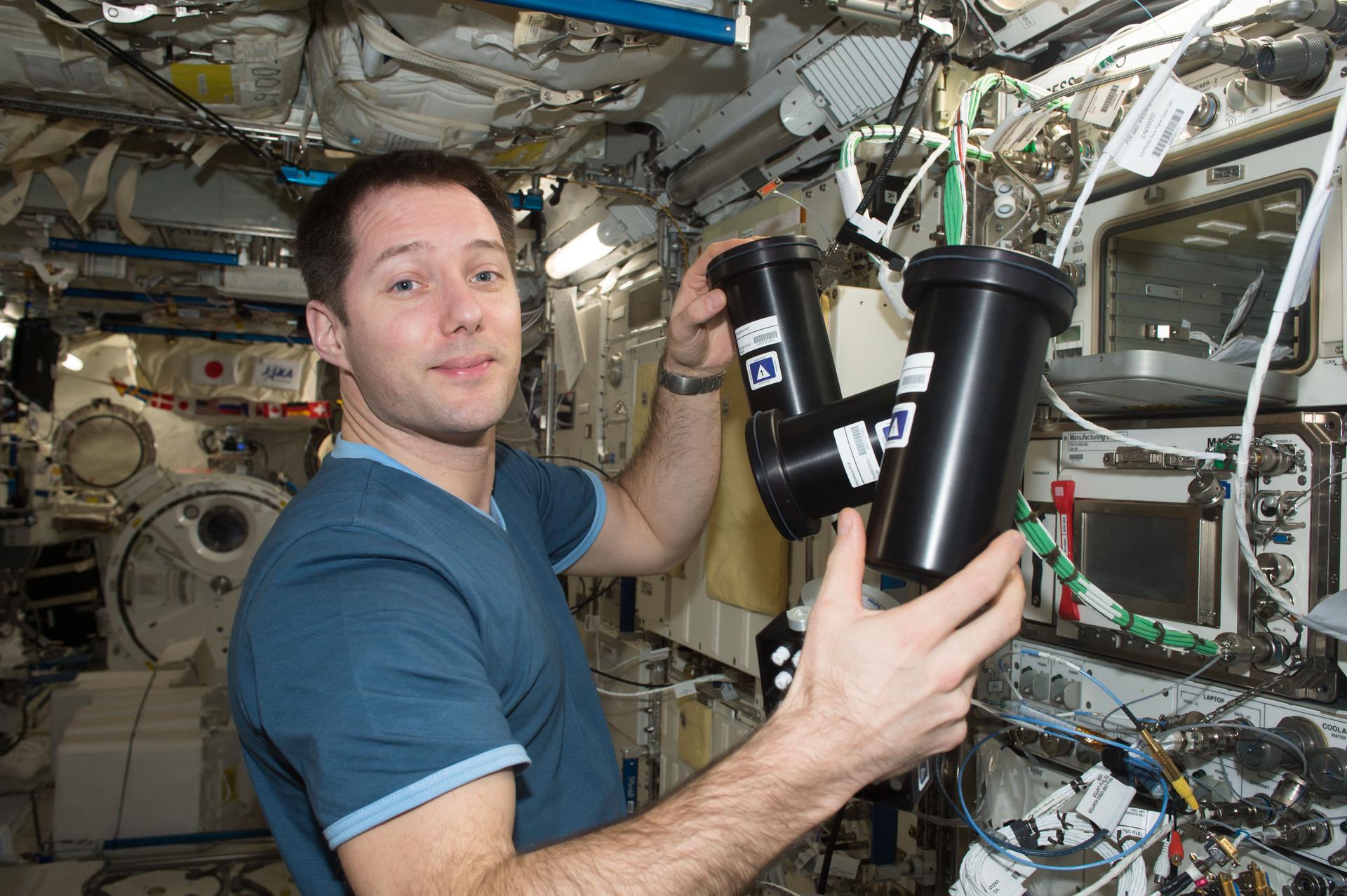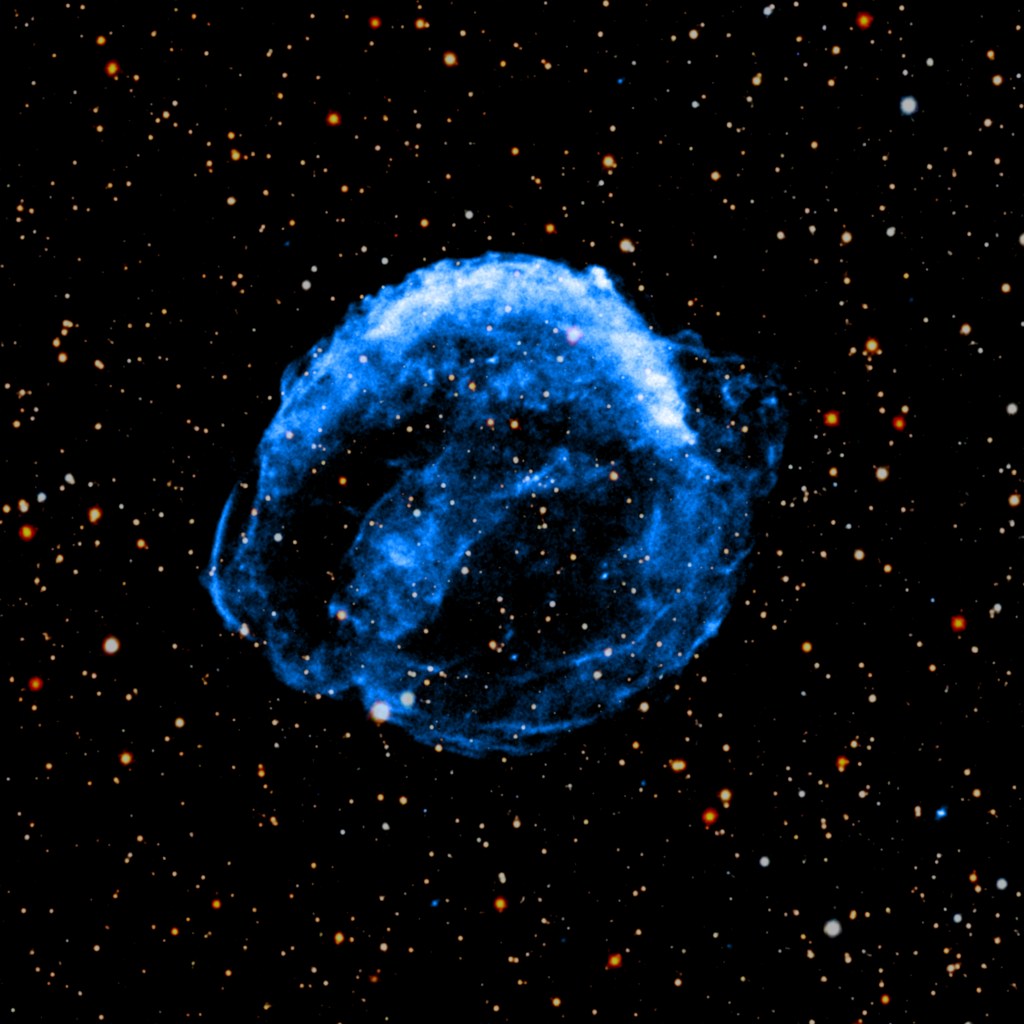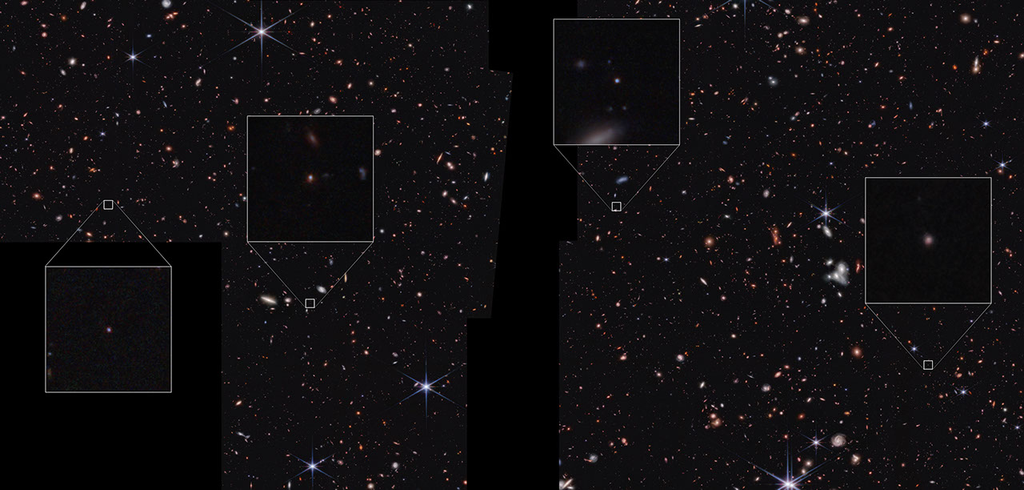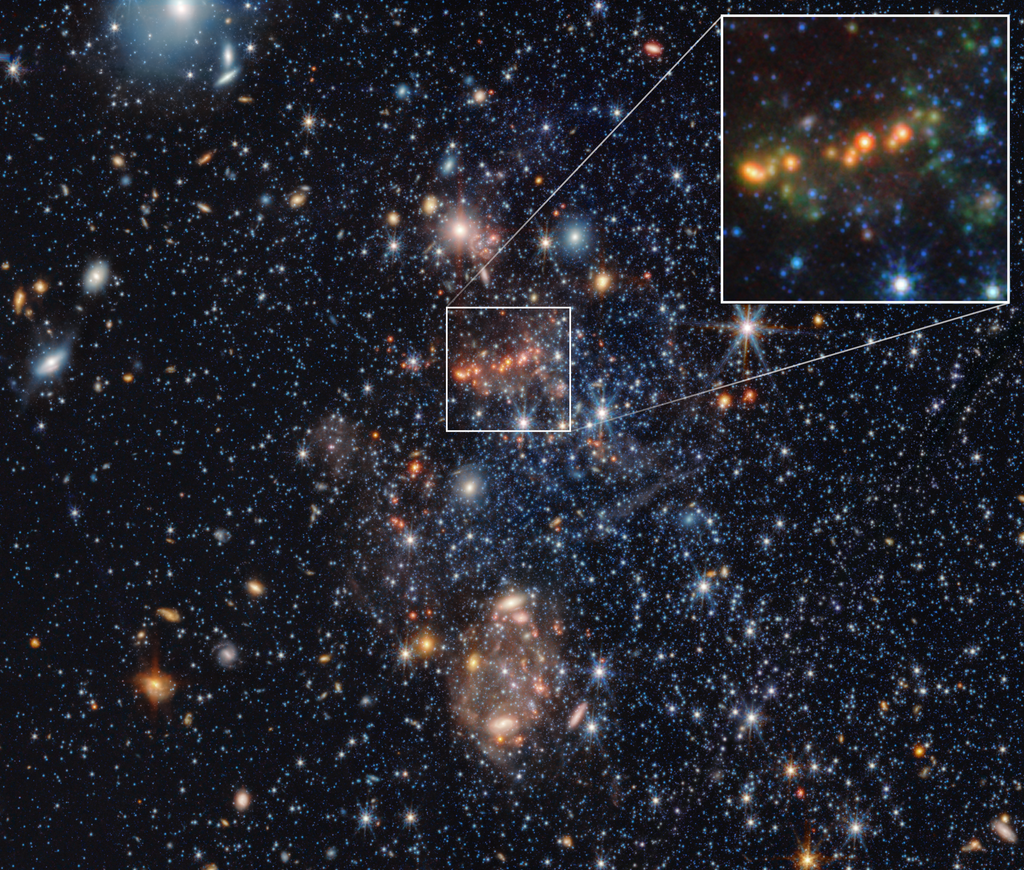1 min read
Spiral Galaxy M74

Resembling festive lights on a holiday wreath, this NASA/ESA Hubble Space Telescope image of the nearby spiral galaxy M74 is an iconic reminder of the impending season. Bright knots of glowing gas light up the spiral arms, indicating a rich environment of star formation.
Messier 74, also called NGC 628, is a stunning example of a "grand-design" spiral galaxy that is viewed by Earth observers nearly face-on. Its perfectly symmetrical spiral arms emanate from the central nucleus and are dotted with clusters of young blue stars and glowing pink regions of ionized hydrogen (hydrogen atoms that have lost their electrons). These regions of star formation show an excess of light at ultraviolet wavelengths. Tracing along the spiral arms are winding dust lanes that also begin very near the galaxy's nucleus and follow along the length of the spiral arms.
M74 is located roughly 32 million light-years away in the direction of the constellation Pisces, the Fish. It is the dominant member of a small group of about half a dozen galaxies, the M74 galaxy group. In its entirety, it is estimated that M74 is home to about 100 billion stars, making it slightly smaller than our Milky Way.
The spiral galaxy was first discovered by the French astronomer Pierre Méchain in 1780. Weeks later it was added to Charles Messier's famous catalog of deep-sky objects.
This Hubble image of M74 is a composite of Advanced Camera for Surveys data taken in 2003 and 2005. The filters used to create the color image isolate light from blue, visible, and infrared portions of the spectrum, as well as emission from ionized hydrogen (known as HII regions).
A small segment of this image used data from the Canada-France-Hawaii Telescope and the Gemini Observatory to fill in a region that Hubble did not image.
About the Object
- R.A. PositionR.A. PositionRight ascension – analogous to longitude – is one component of an object's position.01h 36m 41.83s
- Dec. PositionDec. PositionDeclination – analogous to latitude – is one component of an object's position.15° 46' 59.59"
- ConstellationConstellationOne of 88 recognized regions of the celestial sphere in which the object appears.Pisces
- DistanceDistanceThe physical distance from Earth to the astronomical object. Distances within our solar system are usually measured in Astronomical Units (AU). Distances between stars are usually measured in light-years. Interstellar distances can also be measured in parsecs.Approximately 32 million light-years (10 million parsecs) away
- DimensionsDimensionsThe physical size of the object or the apparent angle it subtends on the sky.The image is 3.3 arcminutes (31,000 light-years or 9,500 parsecs) wide.
About the Data
- Data DescriptionData DescriptionProposal: A description of the observations, their scientific justification, and the links to the data available in the science archive.
Science Team: The astronomers who planned the observations and analyzed the data. "PI" refers to the Principal Investigator.The Hubble image was created from HST data from proposals: 10402: R. Chandar (University of Toledo), B. Whitmore (STScI), R. Kennicutt Jr. (University of Cambridge), L. Bianchi (Johns Hopkins University), D. Calzetti (University of Massachusetts), D. Elmegreen (Vassar College), B. Elmegreen (IBM/T.J. Watson Research Center), M. Regan (STScI), S. Larsen (European Southern Observatory, Germany), and J. Brodie (University of California, Santa Cruz) 9796: J. Miller (University of Michigan), G. Fabbiano and A. Zezas (Harvard-Smithsonian Center for Astrophysics), P. Kaaret (University of Iowa), J. Grindlay (Harvard University), A. Kong (Massachusetts Institute of Technology), A. King (University of Leicester), M. Ward (University of Durham), V. Kalogera (Northwestern University), M. Krauss (Massachusetts Institute of Technology), and M. Garcia (Harvard-Smithsonian Center for Astrophysics) - InstrumentInstrumentThe science instrument used to produce the data.HST>ACS/WFC
- Exposure DatesExposure DatesThe date(s) that the telescope made its observations and the total exposure time.November-December, 2003 and February-June, 2005
- FiltersFiltersThe camera filters that were used in the science observations.F435W (B), F555W (V), F656N (Halpha + [N II]), and F814 (I)
- Object NameObject NameA name or catalog number that astronomers use to identify an astronomical object.M74, NGC 628
- Object DescriptionObject DescriptionThe type of astronomical object.Spiral Galaxy
- Release DateNovember 29, 2007
- Science ReleaseHoliday Wishes from the Hubble Space Telescope
- CreditNASA, ESA, and the Hubble Heritage (STScI/AURA)-ESA/Hubble Collaboration; Acknowledgment: R. Chandar (University of Toledo) and J. Miller (University of Michigan)

This image is a composite of many separate exposures made by the ACS instrument on the Hubble Space Telescope. Three filters were used to sample broad wavelength ranges, while one filter was used to sample a narrow wavelength band. The color results from assigning different hues (colors) to each monochromatic image. In this case, the assigned colors are: Blue: F435W (B) Green: F555W (V) Red: F656N (Halpha + [N II]) + F814 (I)

Share
Details
Claire Andreoli
NASA’s Goddard Space Flight Center
Greenbelt, Maryland
claire.andreoli@nasa.gov
































